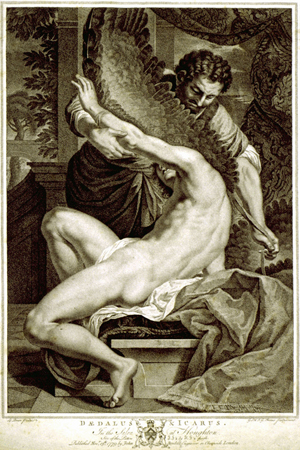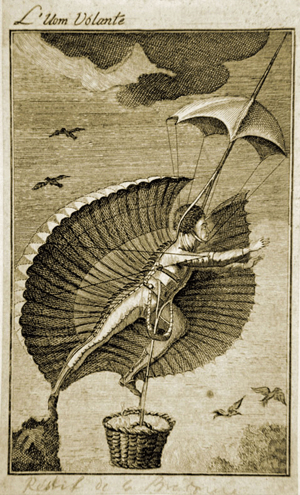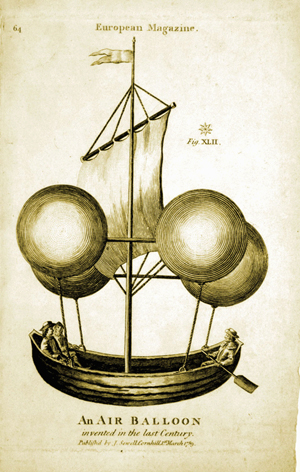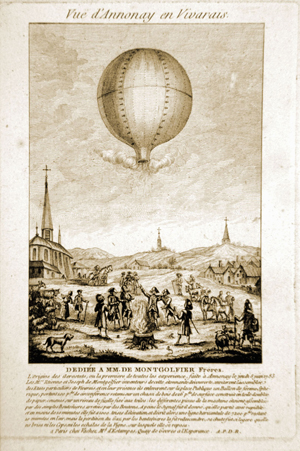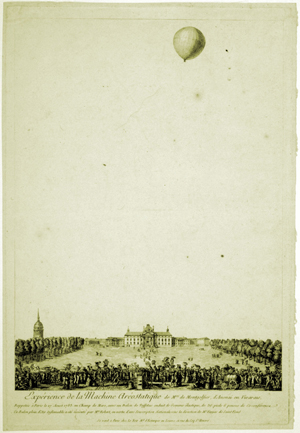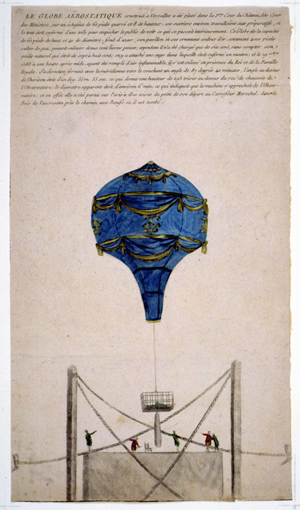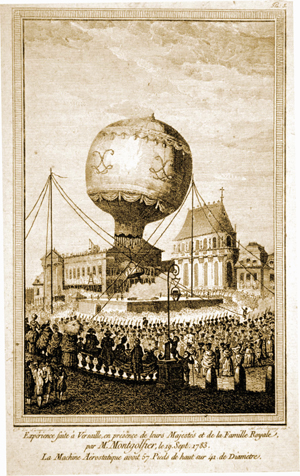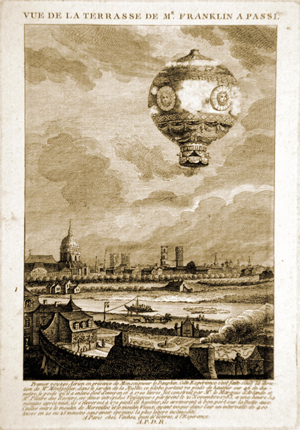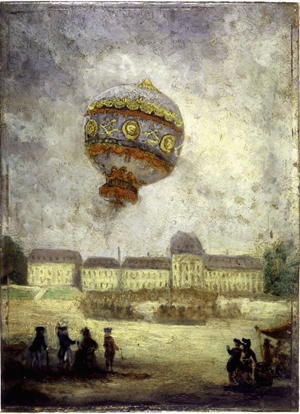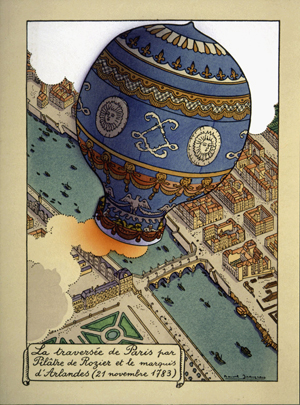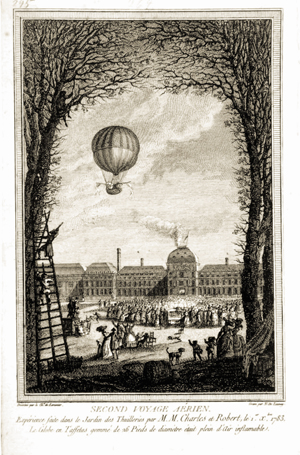Introduction By Paul Maravelas
Colonel Gimbel began to amass his aeronautical collection during World War II, a decade after author Lockwood Marsh had lamented that early aeronautical prints were becoming difficult to find. Yet Gimbel was able to assemble an unsurpassed private collection of images, including one important print (Vuë d'Annonay en Vivarais), which I believe is one of two copies in the United States. At the end of his life Gimbel owned approximately 2,000 prints, which he organized into about 40 groups according to theme. Aside from a handful of prints that were framed and exhibited in Gimbel's New Haven home, the collection was kept in semi-rigid boxes.
Such an extensive archive allows one to compare a variety of illustrations that depict a single aeronautical event; one soon concludes that we cannot view these prints literally. The variations are not surprising when we reflect that a commercial medium was used to generate commemorative images of scenes that were often momentary or, in fact, had yet to occur; in either case they presented particular challenges to the artist
Flight, throughout its history, appeared to be less promising to some people than to others, and one sees (especially in the eighteenth century) a large number of satirical prints in which the balloon is used to symbolize folly or the balloon itself is characterized as the contrivance of misguided enthusiasts. The subject is well addressed in Melvin Waldfogel, François-Louis Bruel (De Vinck), and by Burkhard Leismann in a chapter of Leichter als Luft. Without ignoring this phenomenon altogether, I have selected largely from the prints produced for aeronautical enthusiasts. I have tried to emphasize in the text the perspective of the audience for which the prints were intended, with the hope that we might consider how these prints were regarded by those who first enjoyed them.
Measurements of the prints are given in centimeters measured from the edges of the plate with intaglio prints and the edges of the images for others. In the descriptions the wording is recorded as it appears on the prints, incorporating the irregular spellings and apparent disregard for accents sometimes found on the originals. Many of the artisans or artists who created these works could not be located in documentary sources, and their names appear simply as given on the prints. The publishers are indicated only when their prominence or association with the world of aeronautics seemed to dictate it. The numbering system maintained in the Gimbel collection (the “X” number identifying each print) is based on Gimbel's grouping. Finally, the full citations to the catalogues and other works (e.g., Bruel, Caproni, George, Leichter als Luft, Liebmann and Wahl, March) mentioned in the descriptions are included in the “Prints” section of the Bibliography of this program.

